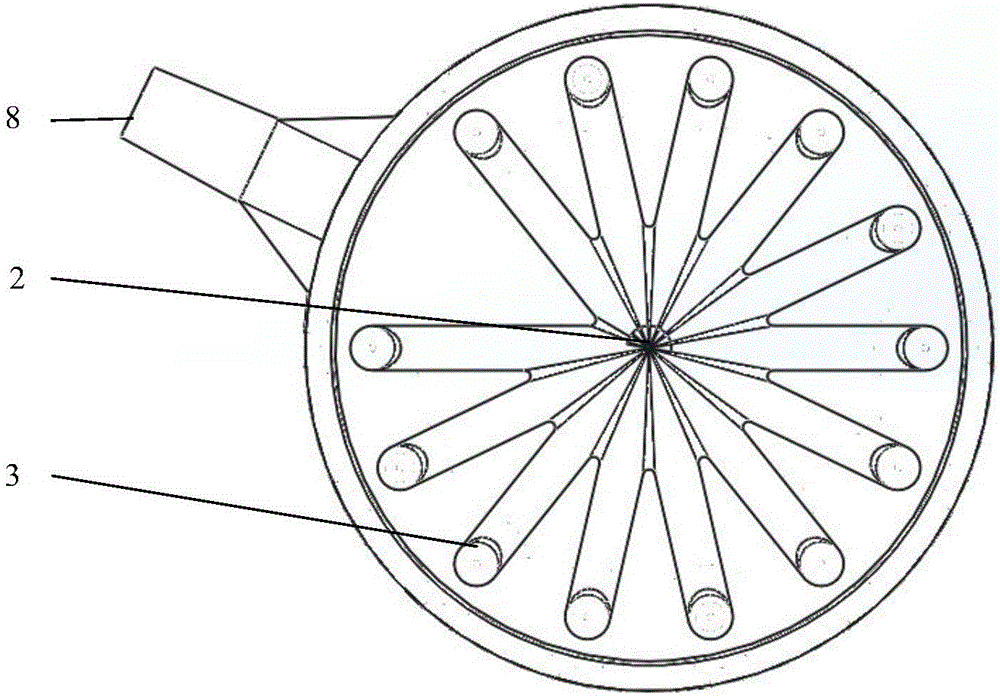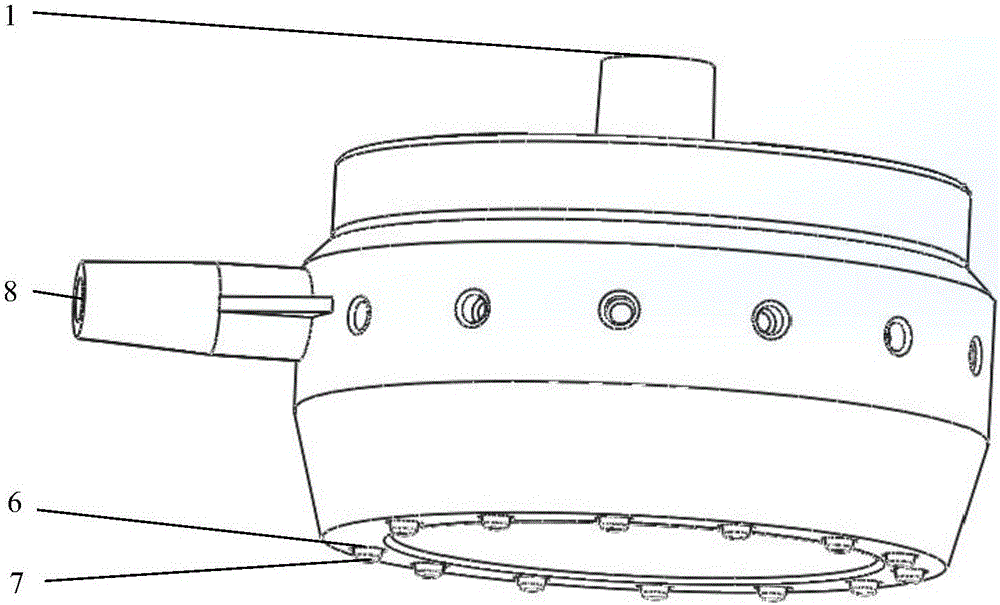Multi-nozzle module based on 3D (three-dimensional) printing and device and technique for large-scale production of particles
A 3D printing and multi-nozzle technology, applied to chemical instruments and methods, laboratory containers, processing and manufacturing, etc., can solve the problems of difficult control of the operation process, many interference factors, and difficult formation of micro-droplets, so as to save photosensitivity Uniform distribution of resin and fluid, reducing printing difficulty
- Summary
- Abstract
- Description
- Claims
- Application Information
AI Technical Summary
Problems solved by technology
Method used
Image
Examples
Embodiment Construction
[0028] A mass production technology of multi-nozzle modules based on 3D printing technology, comprising the following steps:
[0029] Step (1): using computer-aided three-dimensional drawing software to design a single two-phase flow nozzle structure;
[0030] Step (2): Draw a module to integrate multiple nozzles at the same time;
[0031] Step (3): Using 3D printing pre-processing software to slice the three-dimensional multi-nozzle structure module layer by layer;
[0032] Step (4): Utilize the 3D printer to print out the nozzle entity;
[0033] Step (5): connect nozzles, flowmeters, constant pressure pumps, metering pumps, etc. through pipelines to form a batch particle production system.
[0034] Preferably, said 3D printer is a stereolithography (SLA) printer.
[0035] Preferably, the material of the multi-micropipe two-phase flow nozzle module is opaque resin such as pic100.
[0036] Preferably, in step (1), the single two-phase flow nozzle nozzle has a double-layer ...
PUM
 Login to View More
Login to View More Abstract
Description
Claims
Application Information
 Login to View More
Login to View More - R&D
- Intellectual Property
- Life Sciences
- Materials
- Tech Scout
- Unparalleled Data Quality
- Higher Quality Content
- 60% Fewer Hallucinations
Browse by: Latest US Patents, China's latest patents, Technical Efficacy Thesaurus, Application Domain, Technology Topic, Popular Technical Reports.
© 2025 PatSnap. All rights reserved.Legal|Privacy policy|Modern Slavery Act Transparency Statement|Sitemap|About US| Contact US: help@patsnap.com



